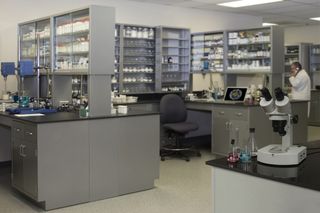Medical industry looks to tech to cut drug costs
Pharmaceutical firms need better processes and IT systems to make developing new medicines more affordable.

IT can help reduce the costs involved in drug development and speed it up, too.
Speaking in Geneva at an Intel event at the CERN lab, Karsten Kottig, projects lead at medical tech firm PerkinElmer, explained that pharmaceutical companies are looking to technology to help cut the costs of drug discovery the development that creates new types of medicine.
Processes need improvement, because costs are spiralling every year. "More money into process to get same level of results," he said.
"Pharmaceutical companies have to put a lot of money into the process, but the outcome, the number of really new drugs is very low," he added.
On top of that, drug development can take between seven and 10 years. "We are trying to accelerate that," he said.
With costs in the billions, late stage failures are difficult to make up for. "Each month you work with a failing drug costs a hell a lot of money," he said.
This is where IT comes in. New instruments, data management, and communication methods can all help, and all are supported by software and IT, according to Kottig.
Get the ITPro. daily newsletter
Receive our latest news, industry updates, featured resources and more. Sign up today to receive our FREE report on AI cyber crime & security - newly updated for 2024.
For example, as processors get stronger, better modelling and visualisation can become more detailed and include better content, such as 3D images. This helps drug researchers decide what to focus on sooner rather than later, he explained.
His firm's Opera high throughput microscope offers 3D information. It creates so much data, it includes its own small-cluster computer, featuring three or four rack servers, to analyse 1,000 experiments each day.
"These systems have to deal with a lot of data... and it needs to be stored for 20 years for patent protection," he added.
To help with this, PerkinElmer has worked with Intel to speed up processing power and optimise its products. While Moore's Law has held true and Intel keeps releasing more powerful chipsets, medical applications - like new textural analysis systems - constantly need more and more power. "We are permanently asking for more processing power faster, for our new applications," Kottig said.
Interoperability is key. "If PerkinElmer is no more in 10 years, its current customers still need to be able to access [their data]," he said.




